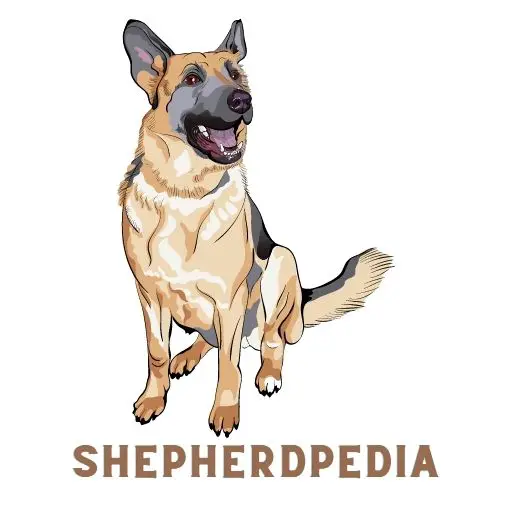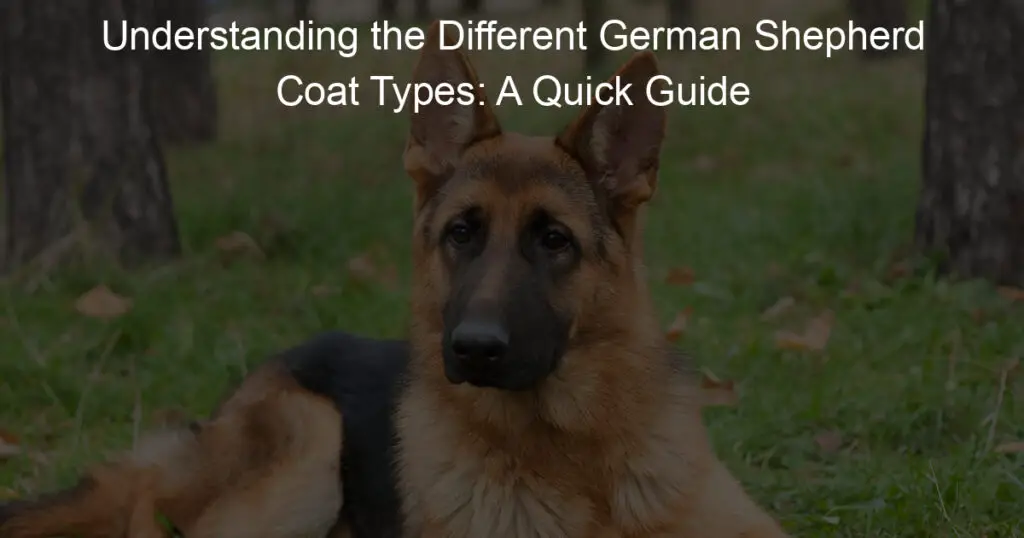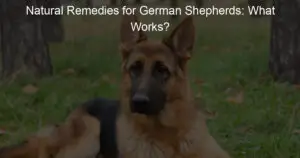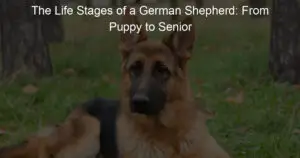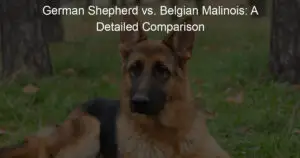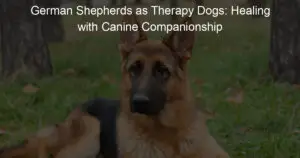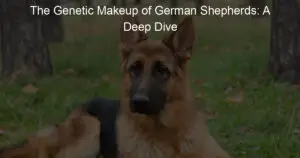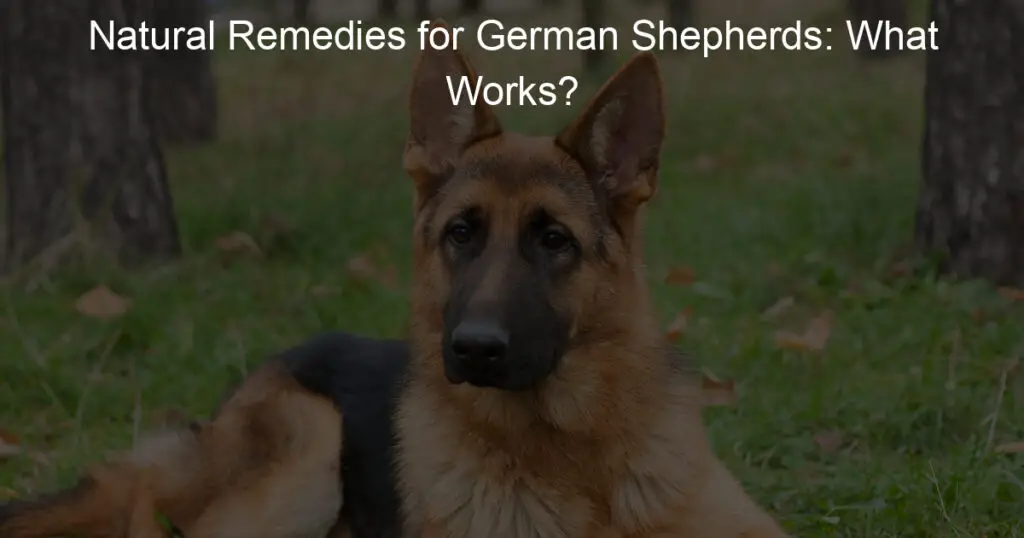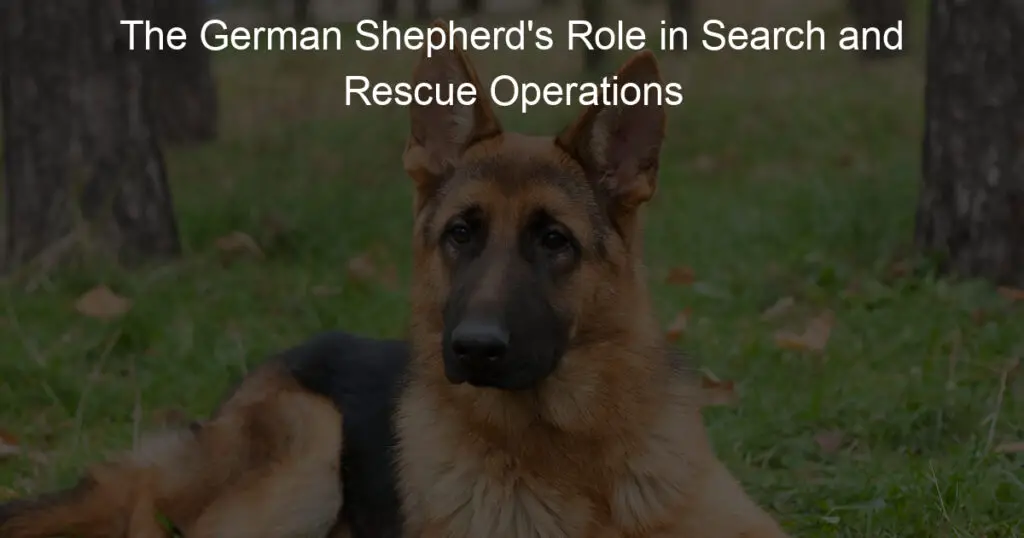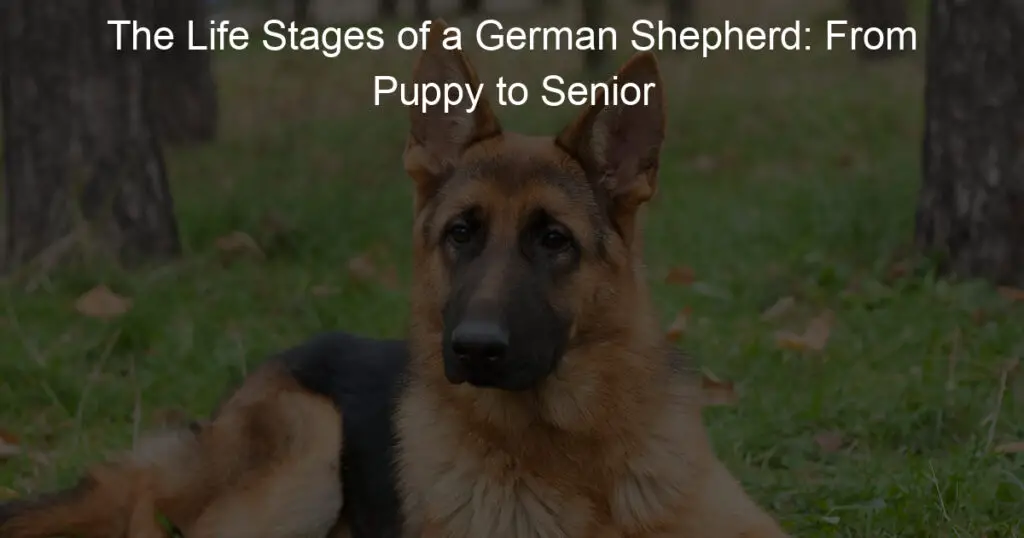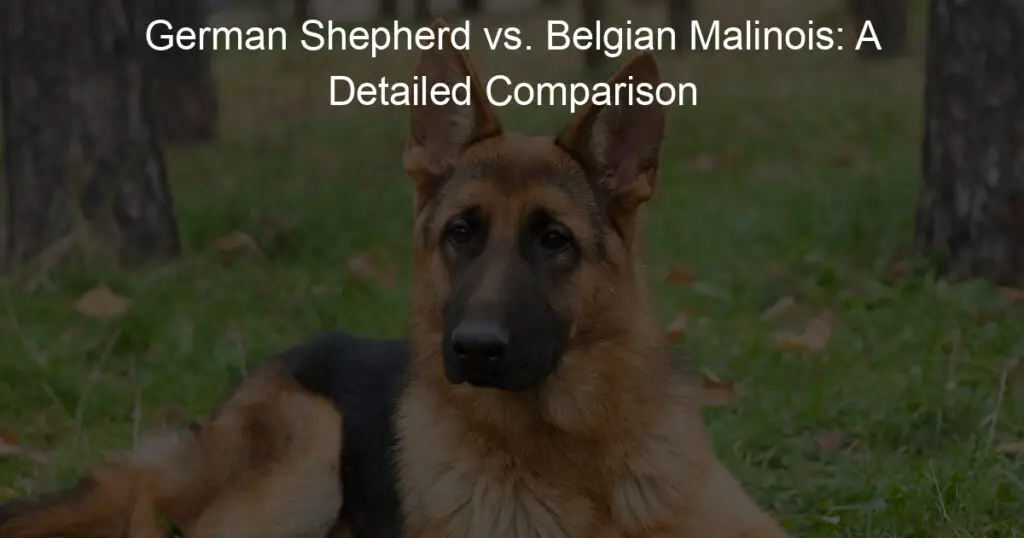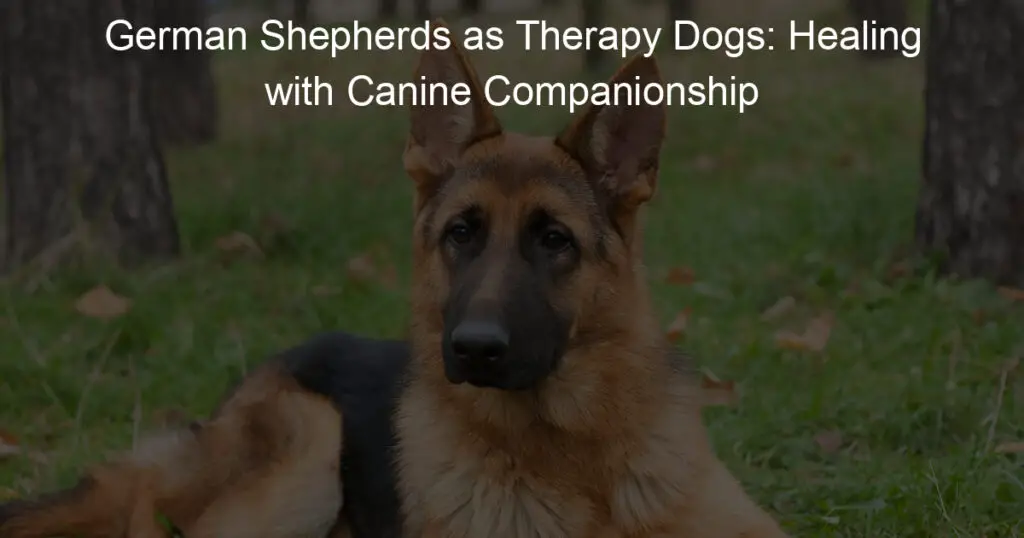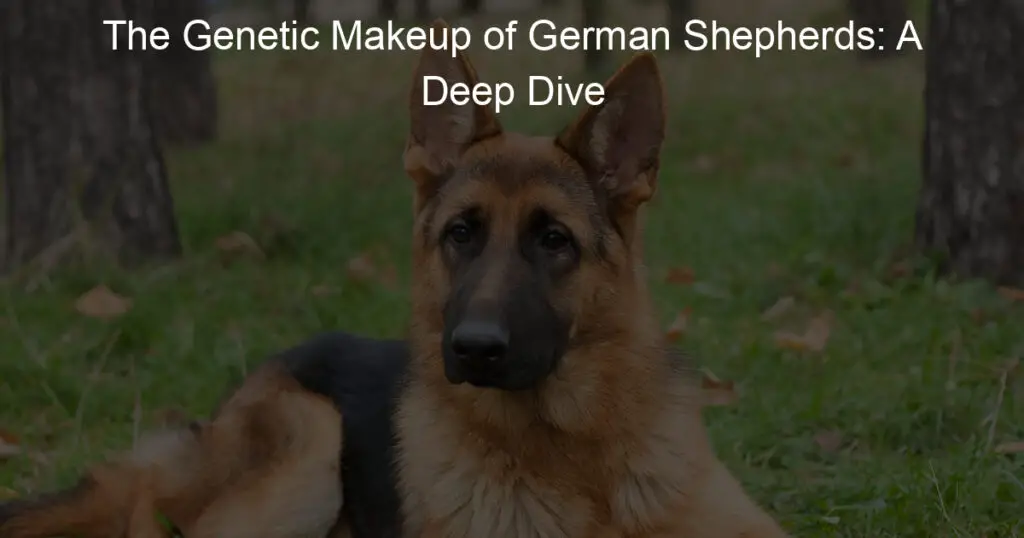When you think of a German Shepherd, you might picture a beautiful dog with a distinct coat pattern, but did you know there are multiple coat types within this breed?
In this article, we will dive into the different German Shepherd coat types, helping you gain a better understanding of this diverse and popular breed.
We will explore the different colors and patterns that can appear on German Shepherds, as well as discuss how to recognize coat variations and the diversity in markings.
Additionally, we will touch on the importance of grooming and taking care of German Shepherd coats and how coat types can affect the dog’s overall health, temperament, and behavior.
Key Takeaways
- Different coat types exist within the German Shepherd breed
- Recognizing coat variations can help in understanding your dog’s specific needs
- Proper grooming and care are essential in maintaining a healthy German Shepherd coat
Understanding the Different German Shepherd Coat Types
As a German Shepherd owner, I’ve learned a lot about the different coat types that can be seen in this breed.
It’s important to understand these coat types in order to properly care for your dog and make sure they are comfortable and healthy.
German Shepherds typically have either a single coat or a double coat. The double-coated type is more common, and it consists of two layers: the topcoat and the undercoat.
The topcoat, also known as the guard hair, is made of long, straight, and waterproof hairs that protect the dog from the elements.
The undercoat, on the other hand, is soft, dense, and fluffy, providing insulation and warmth for the dog. This double coat is one of the reasons German Shepherds can thrive in various weather conditions.
In contrast, single-coated German Shepherds only have the topcoat without the dense undercoat. They still have protective guard hairs but may not be as well-insulated as their double-coated counterparts.
This can make them less suited to extremely cold climates but easier to groom due to less shedding.
It is essential to note that you should never shave or clip a double-coated German Shepherd’s fur, as doing so can damage their coat and affect its ability to protect and insulate them.
Instead, regular brushing should be used to help control shedding and keep the coat free of tangles and debris.
In addition to coat type, German Shepherds can also have variations in coat length, color, and pattern. Some common coat colors include black and tan, sable, solid black, solid white, and even blue.
The length of the coat can range from short to long, with the long-haired German Shepherds often having a more fluffy appearance.
Understanding the different coat types of German Shepherds can help you to provide the best care for your dog.
Since they come in various types, finding the perfect German Shepherd for your home can depend not only on personality but also on coat type.
Carefully consider these factors when selecting your new canine companion.
Colors of German Shepherd Coats
When it comes to German Shepherd coat colors, there are quite a few options to consider. I find that understanding these colors can help potential owners or breed enthusiasts better appreciate the breed’s versatility and uniqueness.
In this section, I’ll go through some of the most common coat colors you might encounter in German Shepherds.
Solid Black German Shepherds are quite striking, as their coats are entirely black, giving them a sleek and intense appearance. These dogs often have a luxurious shine to their coats, making them quite eye-catching.
Black and Red German Shepherds have a rich red base coat with black markings typically on their back, tail, and around the face. The hues can vary, ranging from light reddish-brown to deep mahogany shades.
Black and Tan German Shepherds are another popular color combination. These dogs have a tan base coat with black markings on their back, face, and paws. This coloration can vary greatly, with some dogs having more tan and others having more black.
Black and Silver German Shepherds are similar to black and tan dogs but with a lighter shade of gray or silver in place of the tan hue. The effect creates a more muted but equally beautiful dog.
Black and Cream German Shepherds are almost a midpoint between black and tan and black and silver dogs. Their base coat is a soft cream color, with black markings like other bi-color German Shepherds.
The White German Shepherd is a controversial color in the breed, as some breeding organizations do not recognize them or consider them standard. These dogs are all white, with no other markings.
Sable German Shepherds have a multi-colored coat, with each individual hair having two or more colors on it. This creates a complex and beautiful appearance, with shades of tan, black, gray, and sometimes even silver or red mixed in.
Liver and Blue German Shepherds are quite rare and result from a dilution of the primary colors. Liver German Shepherds have a brownish-red hue, while Blue German Shepherds have a steel-gray or slate-blue tint to their coats.
Keep in mind that, as with any breed, genetics, and health play a significant role in determining the coat color of any given German Shepherd, and these classifications are meant to simplify the vast range of shades and combinations found in the breed.
Each German Shepherd has its unique beauty, and their coat colors are just one aspect of what makes them such wonderful dogs.
Recognizing Coat Variations
When it comes to German Shepherds, I’ve observed that there are a variety of coat types and colors.
In fact, these dogs can have short, medium, or long coats, each with their own unique appearance and characteristics.
For instance, the short-haired German Shepherd has a coat length of about an inch and a denser undercoat.
This type of coat is low maintenance and offers the dog protection against the elements. Their standard colors are black, black and tan, black and red, and sable.
On the other hand, a medium-haired German Shepherd’s coat is slightly longer, about 1 to 2 inches in length. The medium coat also has a dense undercoat that provides insulation.
It requires a bit more grooming than the short coat. This coat type is found in the same standard colors mentioned for short-haired German Shepherds.
As for the long-haired German Shepherd, their coat length is around 2 inches or longer. It is plush and tends to be more flowy and soft, giving the dog a stunning appearance.
Nevertheless, this coat type needs regular grooming to prevent mats and tangles. Interestingly, the long-haired coat is also available in the standard colors, but rare colors like blue and liver are seen more often in long-haired German Shepherds.
It’s important for me to remember that while coat color doesn’t affect a German Shepherd’s temperament or ability, the rarest color – pure white – is not recognized by certain breed standards.
Even so, a white German Shepherd can still make a fantastic companion and loyal friend.
In summary, by paying attention to coat length and color, I can identify the distinct variations among German Shepherd coat types.
Understanding these differences allows me to appreciate the breed as a whole and helps me make informed decisions about grooming and care.
Diversity in Markings
I’ve noticed that one of the most fascinating aspects of German Shepherds is the diversity in their coat markings.
This breed can be found in a variety of colors, patterns, and combinations, making it easy to identify and admire their unique appearance.
In the case of bi-color German Shepherds, the coat is predominantly black with areas of tan, red, silver, or cream. These markings usually appear on the legs, chest, face, and the base of their tail.
The presence of a masking gene can cause these markings to expand and sometimes cover almost the entire body.
This masking gene creates a distinct pattern, like a dark mask covering the face.
One common appearance in bi-color German Shepherds is the two-toned coat, where the color distribution is fairly even.
This pattern, known as bicolor, comprises mainly black and tan, with well-defined demarcation between the two colors.
An interesting piebald pattern can also be present in German Shepherds, causing large patches of white to appear on their coat.
This is due to a certain gene that inhibits pigmentation, allowing for the white fur to be more visible.
These diverse markings on German Shepherds are not merely aesthetic features but also serve a purpose.
For instance, a dark mask can help protect their eyes from the glare of the sun while out working in the field.
As a German Shepherd lover, I appreciate the incredible range of coat markings and patterns in this breed.
It adds to their charm and makes each dog unique and special in their own way.
Grooming and Taking Care of German Shepherd Coats
As a German Shepherd owner, I know how important it is to take care of their coats. Grooming is essential for maintaining a healthy and beautiful coat.
One of the first things I’ve learned is that German Shepherds have a double coat, which means they have a thick undercoat and a protective outer coat.
This double coat requires regular brushing to avoid tangles, mats, and excessive shedding.
For grooming, I use the right tools to make the process easier and more effective. A slicker brush works well for removing loose hair from the undercoat, while a bristle brush is perfect for the outer coat.
I make sure to brush my German Shepherd at least twice a week to prevent mats and keep their coat looking its best.
Bathing is another crucial part of taking care of my German Shepherd’s coat. I bathe them once every couple of months or when they get really dirty.
It’s essential not to over-bathe as it can strip their coat of natural oils, which help maintain its health and shine. When bathing, I use a gentle dog shampoo and make sure to rinse thoroughly to avoid any residue that might damage the coat or irritate their skin.
Trimming is not typically required for German Shepherds, but occasionally, I might trim around the paws or ears to keep them neat and tidy.
It’s important only to trim a minimal amount to avoid harming the coat’s structure and function.
Diet plays a significant role in the health of my German Shepherd’s coat. I ensure they get plenty of fatty acids, especially omega-3, in their diet to maintain a healthy and shiny coat.
Foods rich in omega-3, such as fish oil or flaxseed oil, can be added to their meals to provide these essential nutrients.
In conclusion, taking care of a German Shepherd’s coat requires regular grooming, proper bathing, and a healthy diet. By following these steps, I’m able to keep my German Shepherd’s coat healthy, shiny, and beautiful.
Health Factors Related to Coats
As a German Shepherd owner, I’ve noticed that the health of my dog can be influenced by their coat type.
There are several factors to consider when looking at a German Shepherd’s coat, particularly relating to health.
For instance, White German Shepherds, while visually stunning, often face misconceptions about their health due to their coat color.
One common misconception is that White German Shepherds are albinos or inherently unhealthy due to their coat color. Yet, this is untrue. Their white coat is the result of a recessive gene and doesn’t necessarily mean they’ll experience additional health issues.
Nonetheless, some breeders might avoid breeding white German Shepherds, as they believe it could lead to a higher likelihood of health problems.
Aside from coat color, it’s essential to maintain your German Shepherd’s coat to ensure optimal health. Regular grooming is crucial to prevent matting, which can cause discomfort and skin issues.
For a German Shepherd puppy, introducing grooming from an early age can help them get used to the process, making it less stressful for both you and your furry friend as they grow older.
Another aspect to consider about German Shepherd coats and their health is the possibility of skin allergies or infections.
These can sometimes be more easily detected in dogs with lighter coats, such as White German Shepherds.
If you suspect your dog might have an issue, it’s important to consult with a veterinarian for the appropriate course of action.
In conclusion, while the coat type of a German Shepherd may have minimal impact on their overall health, proper care and grooming are essential for ensuring a healthy, happy life for your canine companion.
So, make sure to keep up with regular grooming and check-ups with your veterinarian.
German Shepherd’s Temperament and Behavior
In my experience with German Shepherds, I’ve found them to be loyal and obedient dogs, which makes them ideal companions and working animals.
Their temperament is usually characterized by their fearless nature, confidence, and intelligence.
When interacting with my German Shepherd, I noticed they consistently exhibit a keen sense of curiosity, often displaying an eagerness to learn new things.
This behavior facilitates their ongoing training, as they take pleasure in mastering new skills and commands.
In a family setting, German Shepherds are known to be loving and protective of their human pack members, which stems from their inherent loyalty.
As a result, they often make excellent family dogs as long as everyone is involved in the dog’s upbringing, keeping them socialized and well-adjusted.
But it’s essential to keep in mind that not all German Shepherds are the same. Some might be more reserved or independent in their behavior, requiring more patience and persistent training from their owners.
I’ve found that being consistent with training methods and addressing any aggressive tendencies early on helps in shaping a well-behaved dog.
Finally, German Shepherds are an energetic and active breed, and I can’t stress enough the importance of providing them with ample exercise daily.
Keeping them mentally and physically engaged not only keeps them happy and healthy but also minimizes the risk of developing unwanted behavioral issues.
In conclusion, I have found German Shepherds to be exceptional dogs with a loyal and obedient temperament.
However, it is crucial to cater to their unique needs, including training, socialization, and exercise, to ensure a harmonious relationship with these intelligent and devoted canine companions.
Coat Types and German Shepherd Roles
As a German Shepherd enthusiast, I want to inform you about the different coat types and how they connect to the various roles German Shepherds play in society.
These versatile dogs can be found in various working roles, including police, military, and protection, as well as participating in conformation events and dog shows.
When it comes to coat types, the American Kennel Club (AKC) recognizes two primary coat types for the German Shepherd: the double coat and the long coat.
The double coat is the most common, consisting of a dense, straight outer coat and a soft, thick undercoat. This type of coat is perfect for working dogs, as it provides protection from harsh weather conditions.
Police and military often prefer German Shepherds with a double coat for their durability and functionality.
The long coat, on the other hand, has a more flowing and silky appearance. While it may not be as functional for working purposes as the double coat, the long coat does have its place in conformation events and dog shows.
Breeders often focus on maintaining the aesthetic qualities of the long coat when selecting dogs for show. The long coat is still equipped to offer protection from the elements, although it may require more grooming and maintenance than the double coat.
In addition to coat types, German Shepherds come in a variety of colors recognized by the AKC, including:
- Black
- Black and Tan
- Black and Cream
- Black and Silver
- Black and Red
- Blue
- Gray
- Liver
- Sable
- White
It is important to note that while white German Shepherds are recognized as a German Shepherd color by the AKC, they are disqualified from conformation events.
Regardless, they can still participate in other dog sports and make excellent companions.
Regardless of their coat type and color, German Shepherds are renowned for their intelligence, loyalty, and versatility.
Whether they are working in police K-9 units, serving in the military, or making their owners proud at dog shows, these beautiful dogs are always ready to give their best.
Frequently Asked Questions
What are the main categories of German Shepherd coat types?
There are three main categories of German Shepherd coat types: short-haired, medium-haired, and long-haired. These coat types differ in their length, texture, and density, allowing for a variety of appearances.
How does coat length vary among German Shepherds?
Coat length among German Shepherds can vary from very short, like that of a working or military dog, to long and silky.
Short-haired German Shepherds have a dense, close-fitting coat that requires minimal grooming. Medium-haired German Shepherds have slightly longer coats, needing more grooming than short-haired ones.
Long-haired German Shepherds, on the other hand, have a distinctly longer coat that is often wavy or semi-curly, requiring the most grooming and care.
Do certain German Shepherd colors have specific coat types?
While coat type is not determined by a German Shepherd’s color, some colors might be more commonly associated with certain coat types.
For example, the classic black and tan German Shepherds often have a short to medium-length coat. However, this is not a rule, and it is possible to find German Shepherds of any color with different coat types.
How does coat type impact grooming and care for German Shepherds?
The coat type of a German Shepherd largely impacts the amount of grooming and care required.
Short-haired German Shepherds need less grooming, while medium-haired ones require moderate grooming to keep their coats free of tangles and debris.
Long-haired German Shepherds need the most grooming, including regular brushing, to prevent matting and ensure their coat remains healthy and clean.
Are there any health concerns associated with certain German Shepherd coat types?
There aren’t any specific health concerns associated with a particular German Shepherd coat type. However, a well-groomed and clean coat can help protect your dog from skin conditions and other health issues.
If your German Shepherd has a long coat, it’s essential to maintain proper grooming and care to keep them healthy and comfortable.
Are coat types important when selecting a German Shepherd for breeding?
Coat types can be considered when selecting a German Shepherd for breeding purposes, but they shouldn’t be the main priority.
Factors such as temperament, health, and pedigree should be more significant considerations.
Nonetheless, if you are aiming to breed German Shepherds with specific coat types for show or personal preference, it’s essential to choose breeding dogs with the desired coat type.
